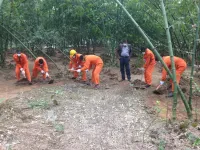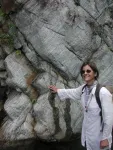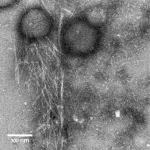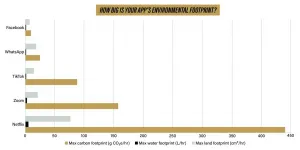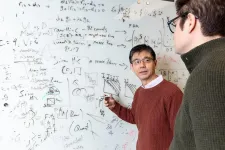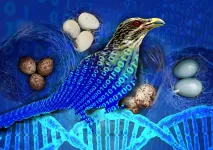(Press-News.org) MADISON, Wis. -- As a new, apparently more transmissible version of the virus that causes COVID-19 has appeared in several countries, new research finds that the transmissibility of viral strains and the population density of a region will play big roles in how vaccination campaigns can help towns and cities return to more normal activities.
The findings suggest that directing vaccines toward densely populated counties would help to interrupt transmission of the disease. Current vaccination distribution plans don't take density into account.
Tony Ives at the University of Wisconsin-Madison and Claudio Bozzuto of the independent data research company Wildlife Analysis GmbH studied the spread of COVID-19 in the U.S. at the start of the pandemic, before people changed their behavior to avoid the disease. This let them uncover factors that may affect the transmission of COVID-19 when masking and physical distancing start to wane and behavior once again resembles the pre-pandemic normal.
"We wanted to get at two things: the first was to try and understand what the dynamics were very early in the pandemic. If we need a vaccination program in place that lets people act normally, then we need to understand the state under those conditions," says Ives, a professor of integrative biology at UW-Madison. "The second was trying to get at a fairly small spatial scale of counties instead of states."
Parsing out county-by-county data from 39 states through May 23, 2020, Ives and Bozzuto found that the higher a county's population density, the more readily SARS-CoV-2, the virus responsible for COVID-19, spread from person to person. This county-level spread is ultimately quantified in the basic reproduction number of the virus, a measure of the average number of people an infected person goes on to infect.
The researchers also found compelling evidence that viral strain matters. Ives and Bozzuto saw that the regions hosting a greater proportion of strains containing a mutation called G614 experienced greater viral spread, a finding supported by other research showing that this strain could be transmitted more readily.
While the G614 mutant is unrelated to B.1.1.7, a strain first identified in the United Kingdom that appears to be spreading more easily right now, the new study reflects the importance that viral strain can play in a local area's overall disease spread.
"We found a clear pattern in the spread rate due to different strains," says Bozzuto. "Our approach was novel because we went directly to the community level to ask, 'Can we see any patterns in the data without making assumptions about individual behavior, including strain-related transmissibility and pathogenicity?'"
To track the rate of viral spread, Ives and Bozzuto worked with the number of people who died of COVID-19 last spring. When testing was limited at the beginning of the pandemic, deaths much more accurately tracked COVID-19 transmission. As long as a relatively constant proportion of infected people die from the disease, data on how deaths increase over time will be directly proportional to the overall rate of spread.
Population density predicted a considerable amount of the difference in the rate of viral spread from county to county during the time period the researchers studied. Counties with low or moderate density did not have high rates of infection spread, though lower transmission rates do not necessarily protect a region from eventually seeing high case counts.
Location explained an even greater fraction of the spread in the researchers' model. Regions within a few hundred miles of one another had similar transmission rates. This regional similarity might have been caused in part by similar public health responses in neighboring counties.
But Ives and Bozzuto also found evidence that regional differences in viral strains explained why neighboring counties looked similar. For example, the low proportion of G614 mutants in the Northwest and Southeast was associated with lower transmission rates.
The researchers investigated several other factors -- such as prevalence of obesity and diabetes, socioeconomic status, and political affiliation -- and found that none of them contributed significantly to the rate of spread of COVID-19 at the very start of the epidemic. Although these factors may affect how susceptible individuals and populations are to complications from the disease, they didn't appear to affect the transmission of the virus from person to person.
The new findings were published in the journal Communications Biology on Jan. 5. Ives and Bozzuto say their work can help public health officials decide where vaccines would do the most good.
"Vaccination programs should consider potential spread rate in different areas. The main driver that will be important is density," says Ives. "From an epidemiological perspective, we would argue that metropolitan areas should be targeted because the level of vaccination or acquired immunity has to be higher than in largely rural areas."
INFORMATION:
This work was supported by NASA (grant 80NSSC20K0282).
--Eric Hamilton, (608) 263-1986, eshamilton@wisc.edu
CONTACT: Tony Ives, arives@wisc.edu; Claudio Bozzuto, bozzuto@wildlifeanalysis.ch
READ ON THE WEB: https://news.wisc.edu/population-density-and-virus-strains-will-affect-how-regions-can-resume-normal-life/
Researchers from the University of Cambridge, the University of Milan and Google Research have used machine learning techniques to predict how proteins, particularly those implicated in neurological diseases, completely change their shapes in a matter of microseconds.
They found that when amyloid beta, a key protein implicated in Alzheimer's disease, adopts a highly disordered shape, it actually becomes less likely to stick together and form the toxic clusters which lead to the death of brain cells.
The results, reported in the journal Nature Computational Science, could aid in the future development of treatments ...
Decades after the industrialized world largely eliminated lead poisoning in children, the potent neurotoxin still lurks in one in three children globally. A new study in Bangladesh by researchers at Stanford University and other institutions finds that a relatively affordable remediation process can almost entirely remove lead left behind by unregulated battery recycling - an industry responsible for much of the lead soil contamination in poor and middle-income countries - and raises troubling questions about how to effectively eliminate the poison from children's bodies.
"Once the lead is in the environment, it stays there pretty much indefinitely ...
A new University of Saskatchewan (USask) study has found that stretching is superior to brisk walking for reducing blood pressure in people with high blood pressure or who are at risk of developing elevated blood pressure levels.
Walking has long been the prescription of choice for physicians trying to help their patients bring down their blood pressure. High blood pressure (hypertension) is a leading risk factor for cardiovascular disease and among the top preventable risk factors affecting overall mortality.
This new finding, published December 18, 2020 in the Journal of Physical Activity ...
On a beach on a remote island in eastern Papua New Guinea, a country located in the southwestern Pacific to the north of Australia, garnet sand reveals an important geologic discovery. Similar to messages in bottles that have traveled across the oceans, sediments derived from the erosion of rocks carry information from another time and place. In this case the grains of garnet sand reveal a story of traveling from the surface to deep into the Earth (~75 miles), and then returning to the surface before ending up on a beach as sand grains. Over the course of this geologic journey, the rock type changed as some minerals were changed, and other materials were included (trapped) within the newly formed garnets. The story is preserved ...
An antibacterial peptide that turns on and off
The researchers solved the 3D molecular structure of an antibacterial peptide named uperin 3.5, which is secreted on the skin of the Australian toadlet (Uperoleia mjobergii) as part of its immune system. They found that the peptide self-assembles into a unique fibrous structure, which via a sophisticated structural adaptation mechanism can change its form in the presence of bacteria to protect the toadlet from infections. This provides unique atomic-level evidence explaining a regulation mechanism of an antimicrobial ...
WEST LAFAYETTE, Ind. -- It's not just to hide clutter anymore - add "saving the planet" to the reasons you leave the camera off during your next virtual meeting.
A new study says that despite a record drop in global carbon emissions in 2020, a pandemic-driven shift to remote work and more at-home entertainment still presents significant environmental impact due to how internet data is stored and transferred around the world.
Just one hour of videoconferencing or streaming, for example, emits 150-1,000 grams of carbon dioxide (a gallon of gasoline burned from a car emits about 8,887 grams), requires 2-12 liters of water and demands a land area adding up to about the size of an iPad Mini.
But leaving your camera off during a web call can ...
January 14, 2021 - Orthopaedic surgeons have traditionally been taught that certain types of knee symptoms indicate damage to specialized structures called the menisci. But these "meniscal" and "mechanical" symptoms do not reflect what surgeons will find at knee arthroscopy, reports a study in The Journal of Bone & Joint Surgery. The journal is published in the Lippincott portfolio in partnership with Wolters Kluwer.
Both types of symptoms are strongly related to the overall amount of cartilage damage in the knee joint - but not to the presence of meniscal tears, according to the new research ...
In today's economy, American businesses often tap into professional management to grow, but most firms in India and other developing countries are family owned and often shun outside managers. A new study co-authored by Yale economist Michael Peters explores the effects that the absence of outside professional management has on India's businesses and the country's economy.
The study, published in the American Economic Review, uses a novel model to compare the relationship between the efficiency of outside managers and firm growth in the United States and India. It shows ...
Genome analysis can provide information on genes and their location on a strand of DNA, but such analysis reveals little about their spatial location in relation to one another within chromosomes -- the highly complex, three-dimensional structures that hold genetic information.
Chromosomes resemble a fuzzy "X" in microscopy images and can carry thousands of genes. They are formed when DNA winds around proteins -- called histones -- which are further folded into complexes called chromatin, which make up individual chromosomes.
Knowing which genes are located in spatial proximity within the chromatin is important because genes that are near each other generally work together.
Now, researchers at the END ...
Computational materials science experts at the U.S. Department of Energy's Ames Laboratory enhanced an algorithm that borrows its approach from the nesting habits of cuckoo birds, reducing the search time for new high-tech alloys from weeks to mere seconds.
The scientists are investigating a type of alloys called high-entropy alloys, a novel class of materials that are highly sought after for a host of unusual and potentially beneficial properties. They are lightweight in relation to their strength, fracture-resistant, highly corrosion and oxidation resistant, and stand up well in high-temperature and high-pressure environments -- making them attractive materials for aerospace industry, space exploration, nuclear energy, and defense applications.
While the promise of these ...
